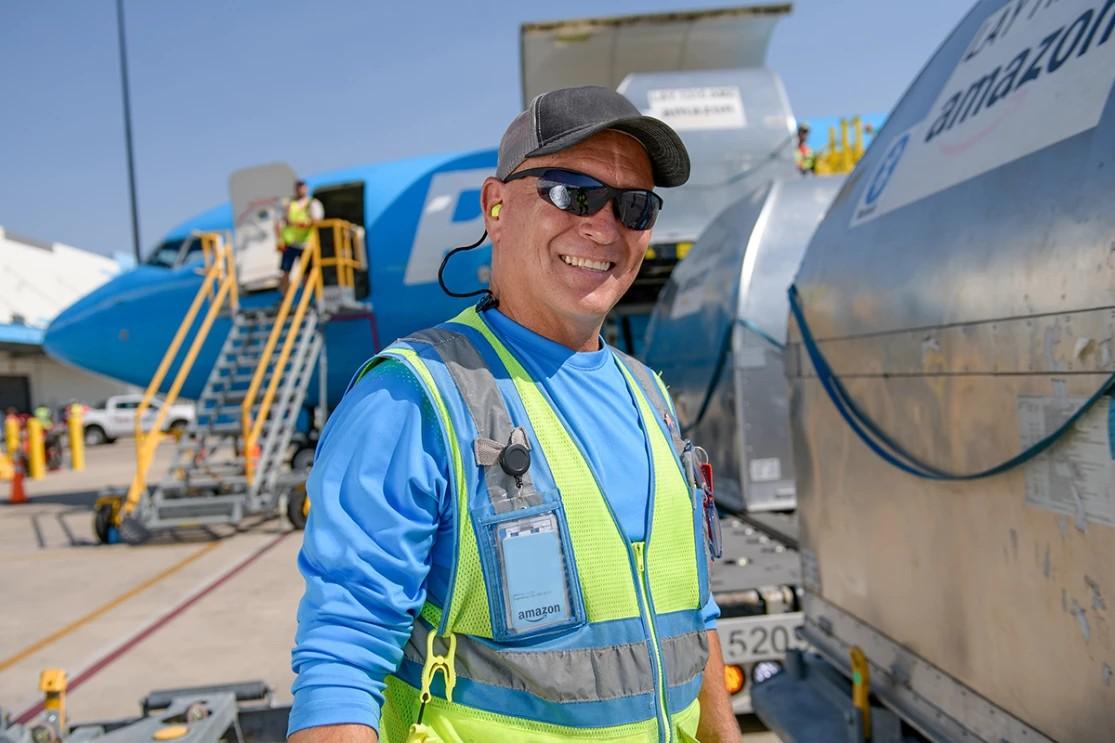Amazon makes progress in workplace safety
Amazon is reducing workplace injuries and time lost to recordable incidents.
The e-tail giant is sharing full-year 2023 safety data for its operations network, reporting that its recordable incident rate (RIR), which includes any work-related injury that requires more than basic first-aid treatment, has improved 30% over the past four years and 8% year-over-year (YoY).
In addition, Amazon’s lost time incident rate (LTIR)—which includes any work-related injury that requires someone to take time away from work (the most serious injuries)—has improved 60% over the past four years and 16% YoY.
In the U.S., Amazon reports operations data to the Occupational Safety and Health Administration (OSHA) under two distinct industries: General Warehousing and Storage, and Courier and Express Delivery Services.
The industry averages for each are determined by the Bureau of Labor Statistics (BLS) based on employers’ size, and BLS categorizes them accordingly. The averages are published each November, meaning the 2022 averages published in November 2023 are the most recent.
Amazon reports it also has made measurable safety progress in the U.S. during the past four years using these metrics:
In the General Warehousing and Storage industry:
- Amazon’s RIR improved 24% during the past four years. Amazon’s 2023 rate is 6.5, which is better than the latest BLS average of 6.8 for employers with more than 1,000 workers.
- The e-tailer’s LTIR improved 77% over the past four years. Amazon’s 2023 rate is 1.1, which is better than the latest BLS average of 2.6 for employers its size.
In the Courier and Express Delivery Services industry:
- Amazon’s RIR improved 41% over the past four years. Its 2023 rate is 6.3, which is better than the latest BLS average of 11.5 for employers its size in this division (250-999 employees).
- The company’s LTIR improved 66% during the past four years. Amazon’s 2023 rate is 2.4, which is better than the latest BLS average of 4.7 for employers its size.
In 2023, Amazon conducted almost 6.3 million inspections globally, a 152% increase from the 2.5 million conducted in 2020, and audited 240 sites across the company.
Amazon also offers Dragonfly, a tool available on employees’ devices that lets them share safety concerns and suggestions. Site managers are immediately informed so they can take appropriate action. In 2023, Amazon says it successfully responded to more than 200,000 Dragonfly observations.
Amazon tackles musculoskeletal disorders
One of the most common injuries at warehousing and transportation companies are musculoskeletal disorders (MSD), more commonly known as a strain or sprain. Over the past four years, the rate of MSD recordable incident rates at Amazon has improved 27%, but they still make up about 57% of all recordable injuries at Amazon.
The remaining 43% of the company’s recordable injuries were due to slips, trips, and falls or occasional objects that came loose and fell. In 2023, Amazon invested in technology and workspace modifications that specifically target MSD risk reduction, including:
- Computer algorithms in fulfillment centers that direct employees to pick and stow products in ergonomic power zones—the area between the shoulder and mid-thigh. As a result, there was an average 5% improvement in the cumulative forces acting on the lower back, and an average 7% on the shoulder.
- Adjustable height workstations at select fulfillment centers.
- Ergonomically redesigned packing stations at specific fulfillment centers.
- Self-adjusting carts that enable employees to handle totes (plastic bins used to move products) in an ergonomically friendly way.
[Read more: Amazon to spend $200 million on safety tech across its transportation network]
"We’re committed to continuing to improve ergonomics across our operations, and it will be a large focus of our 2024 safety investment," Sarah Rhoads, Amazon VP, global workplace health & safety, said in a corporate blog post.



